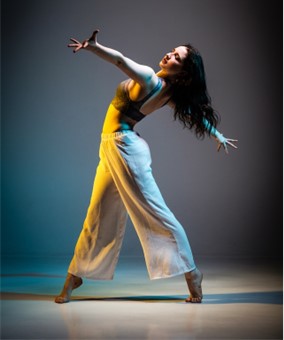When it comes to achieving and maintaining fitness, the mind often jumps to grueling cardio sessions or monotonous gym regimens. However, a form of physical activity that rivals these in health benefits is dancing.
A person doesn’t need to be a professional dancer or an energetic performer to reap the rewards; even basic dance classes can make a significant impact on overall well-being. In the following, Brandi Voss Franklin sheds light on how ballroom and Latin dances can profoundly benefit the body.
Improves Heart Health
Dancing improves cardiovascular health as it strengthens the heart muscles. With a stronger heart muscle, the heart can pump blood more efficiently, providing better oxygen to organs and muscles.
Furthermore, cardio exercises can lower blood pressure and prevent heart disease, as physical activities like dancing can aid in weight loss, contributing to lower cholesterol and blood sugar.
Strengthens the Muscles
In the world of dance, what truly distinguishes a phenomenal performer is the seamless grace they bring to the ballroom. However, achieving this level of elegance becomes an insurmountable challenge without impeccable muscle control. Let’s delve into the key muscle groups that empower dancers to deliver exceptional performances:
Legs
Perhaps the most noticeable aspect of dancing is footwork – especially for intricate ballroom and Latin dances. For instance, when Rumba dancers slide their feet away from them, it requires stable hamstrings to perform the move successfully.
In Cha-cha, when calf muscles are weak or underdeveloped, it can cause a person to trip or fall when shuffling.
But footwork isn’t the only reason why dancers are fascinating to watch.
Core
Another distinct characteristic that Latin and ballroom dancers have is their great posture. But they wouldn’t look so comfortable with a straight posture without excellent core muscles.
Excellent posture doesn’t only make the dancers look skilled or confident. It also does the following:
- Provide lower back stability
- Enhance flexibility
- Aid in balance
With these, dancers are less likely to fall or get injured – which can benefit older individuals who wish to take on ballroom or Latin dancing to help them become fit and healthy.

Arms
Ever wondered how ballroom and Latin dancers can trust their partners so much?
That’s because their partners can support their weight when carrying them – using their arms. When carrying another person, one arm muscle isn’t enough to do so. Dancers – especially males – must constantly use their shoulders, biceps, and triceps.
Moreover, even though the men typically carry the women, female dancers must also have developed arm muscles to hold on to their partners while spinning or being lifted during dance routines.
Keep in mind: these dance steps take a long time to perfect. However, even simple routines can benefit dancers – beginner or intermediate. Don’t feel impatient, frustrated, or disappointed.
But in case a person feels those, who can they turn to?
Promotes Better Bonding and Improved Mental Health
Dance partners can learn more about each other’s skills and comfort levels through practice. Outside the ballroom, however, many continue bonding with each other through other activities.
But even those who aren’t dance partners, the group, club, or community also have frequent discussions about their shared love for dancing. In several studies, feelings of belongingness and social support can lower stress, anxiety, and depression.
Conclusion
The gym isn’t the only place that helps people become healthier – they can do it on the dancefloor, too, can do that; dancing can help people develop better cardiovascular health and stronger muscles.
Lastly, getting fit should always be fun – find a dancing community with outstanding dance instructors and reliable dance partners.
